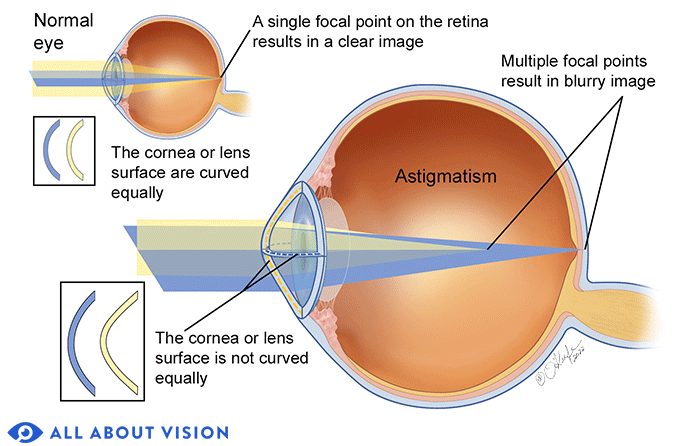Astigmatism

Astigmatism is not a disease; it is simply a type of refractive error or vision condition, which causes blurry, fuzzy or distorted vision.
What causes astigmatism?
Astigmatism is a condition caused by subtle flaws in the way your eye bends light (a process called refraction) that passes to the retina, the light-sensitive area at the back of the eyeball. The optic nerve transmits nerve impulses from the retina to the brain, which translates them into eyesight.
If your vision works properly, your cornea and the lens behind it refract light into the retina. Alas, imperfections in the curvature of the cornea or the lens (or both) can prevent images from properly focusing on the retina. The brain perceives these ocular foul-ups as unclear or distorted images.
Astigmatism is one of the three most common kinds of refractive error. You’ve most likely heard of the other two: myopia (nearsightedness) and hyperopia (farsightedness).

Illustrated by Laurie O'Keefe
Your cornea is a transparent dome covering the front surface of the eye. It’s curved like the lens on a telescope or camera. A perfectly curved cornea and natural lens focus light signals on the retina to produce crisp, clear vision in the brain.
Unfortunately, corneas and lenses may have imperfect curves that interfere with refraction, generating the fuzzy or distorted vision that we call astigmatism. Defects in other structures within the eye may also contribute to astigmatism

